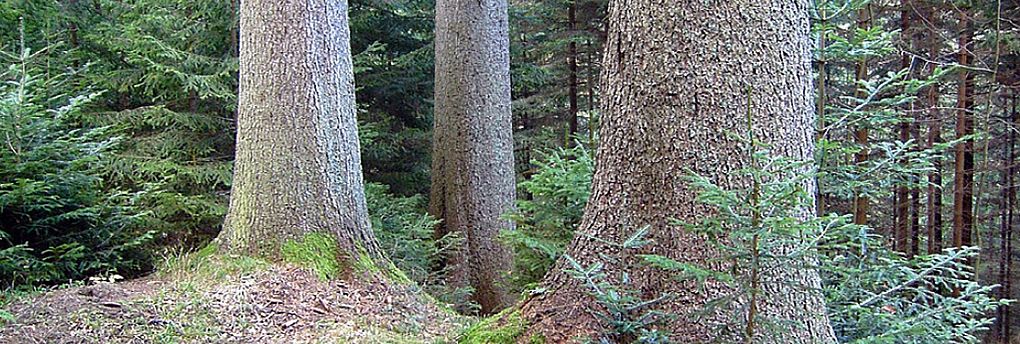
C6 Pahernik Forest
Ein Fall aus Slowenien

Grundlegende Informationen zum Pahernik-Wald gemäß dem letzten Waldbewirtschaftungsplan (2014-2023).
| Waldgesellschaft | - Buchenwald mit Weißer Binsenrute Luzulo-Fagetum (66 %) - Tannenwald mit Rundblättrigem Labkraut Galio rotundifolii-Abietetum (23 %) - Fichtenwald mit Wellenhaargras Avenello flexuosae-Piceetum (3,5 %) - Fichtenwald mit großer Waldbinse Luzulo sylvaticae-Piceetum (3 %) - Buchenwald mit Hartfarn Blechno-Fagetum (3 %) - Wälder aus wertvollen Laubbäumen auf nichtkarbonatischem Grundgestein Dryopterido affinis-Aceretum pseudoplatani (1 %) in Schluchten und an Hängen - Tannenwald mit Langblättrigem Gabelmoos Paraleucobryo-Abietetum (0,3 %) - Grauerlenwald mit Balsamblättrigem Erlenzeiger Lamio orvalae-Alnetum incanae (0,2 %) |
| Waldfläche insgesamt | 570 ha |
| Haupttypen der Verwaltung | Freies Waldbausystem nach natürlichen Prinzipien (von Einzel- und Gruppenselektion bis zu unregelmäßigem Schutzholz) |
| Gesamtvolumen | 453 m³/ha |
| Jährliches Wachstum | 10.8 m³/ha |
| Jährliche Nutzung (geerntete Menge) | 8 m³/ha |
| Totholz (stehend und liegend) | 11.6 m³/ha |
| Höhenstufe | Zwischen 370–1542 m ü.M. |
| Eigentümerschaft | Pahernik-Stiftung |
| Geologie | Unterer Teil: metamorphe Gesteine (Gneis, Phyllit) Oberer Teil: magmatische Gesteine (Tonalit, Dazit) Die Böden sind meist saure Braunerden (Bezirkskambisol) |
| Geschützter Bereich | 14,3 ha sind Ökozellen |
| Naturschutzgebiet (Natura 2000) | 331 ha |
| Hauptfunktion - Erhaltung der biologischen Vielfalt | 73 ha |
| Hauptfunktion - schützend (Schutz der Waldbestände und des Bodens) | 311 ha |
| Hauptfunktion - sozial | Schutz: Schutz der Waldwege Hudi kot - Kralj und Straße auf Pungart Ästhetik: um Kapellen und Kirche, Pahernik-Fichte und Steinskulpturen Pädagogisch: auf Pfaden, die durch Bildungsobjekte führen (Wald) |
